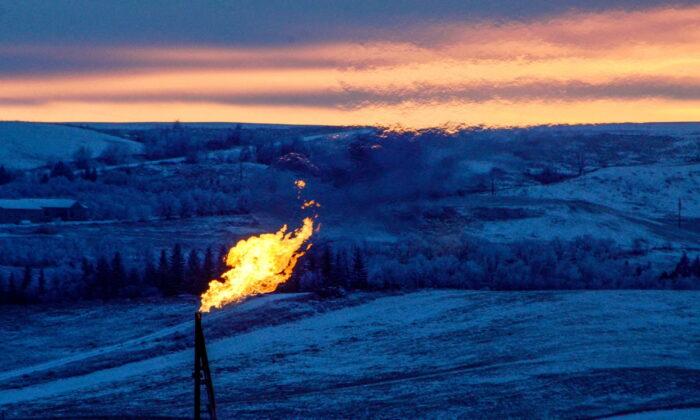It will take more than an extra sweater to stay warm this winter; anyone heating with natural gas will require extra money to burn the furnace. Natural gas is sharply higher than it was last year. This week, natural gas was $8.20 an mcf—the volume of 1,000 cubic feet. This is the price paid to gas producers, set by Henry Hub. It is the highest price in 14 years.
A year ago, in August 2021, natural gas was half the cost at just $4.07 an mcf, and in 2019, when Donald Trump was president, natural gas was $2.22 per mcf.
“Because of what’s going on globally, and because of the policies in certain areas, [producers] are not able to produce as much [gas] and it drives the price up,” Dan Weaver, president and executive director at Pennsylvania Independent Oil and Gas Association, told The Epoch Times.
Consumer Prices
When you add costs like transportation, marketing, and pipeline maintenance, the consumer price is higher.Natural gas prices depend on demand, weather temperatures, economic conditions, and petroleum prices, according to the U.S. Energy Information Administration. While cold weather increases demand for heating, hot weather calls for air conditioning and that puts more demand on electric power plants which use natural gas. It means demand for natural gas is highest in summer, and that is when consumer prices are highest. But consumers may notice the gas price more in the winter when their homes are using it directly for heating.
Consumer natural gas prices tend to peak in July or August and are lowest in November, December, and January according to data from the U.S. Energy Information Administration (EIA).
The residential price for natural gas was projected to be $23 per mcf by August 2022, according to the EIA, but the most recent price listed was $17.55 in May.
A year ago, it was $20.99 and in August 2019 it was $18.37.
Looking at the lowest rates of the year, which happen in the winter months when electric companies are not powering scores of air conditioners, the price was steady for a few years: January 2016 stood at $8.26 per mcf, January 2017 was at $9.32, January 2018 was at $8.90, January 2019 was at $9.30, January 2020 was at $9.43, and January 2021 stood at $9.31.
The residential price went up noticeably in 2022 to $12.04 in January, and the projection for winter 2023 is projected at $14.77.
Using a quick math formula, we can see how this will affect the average home.
Across the industry, it is said that an average home using natural gas for heating, cooking and a clothes dryer, consumes an average of 196 cubic feet a day. Multiply that by 365 days and a home uses an average of 71,540 cubic feet of natural gas a year, or 5,962 cubic feet a month. Divide that by 1,000 and it is 5.96 mcf per month. Let’s round it to 6 mcf a month. The January 2019 price for natural gas was $9.30 per mcf x 6 mcf a month, the average household use a month = a consumer bill of $55.80.
The projected price in 2023 is $14.77 x 6 mcf = a consumer bill of $88.62 a month.
The green agenda has curtailed growth and certainty in the gas industry, Weaver indicated.
“It’s the constant push from the current [Biden] administration—they’re shutting down certain areas for drilling, they’re restricting federal leasing,” Weaver said. “The other thing that’s driving it is what’s going on In Russia. A fair amount of gas is being shipped overseas, to help offset the Russian gas [shortfall] in Europe. So that’s driving the price. It’s a global commodity. This is no longer just here; It’s global.”
“It’s going to take somebody’s grandma getting very, very cold in the middle of winter for these people to wake up to realize that elections have consequences,” Weaver said. “If you want this green agenda, you are going to be paying more.”





